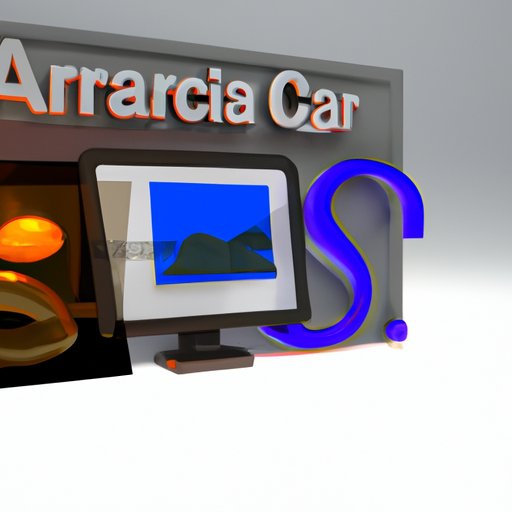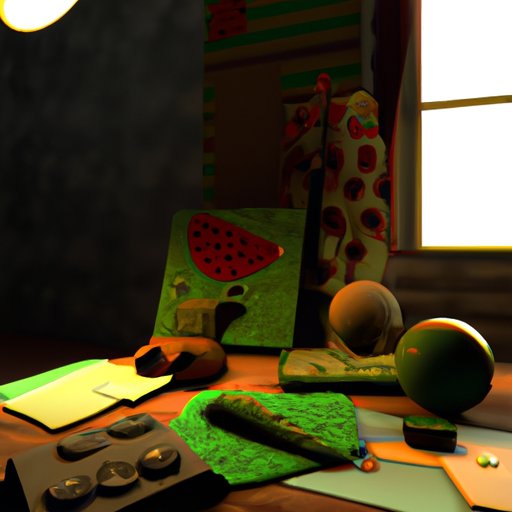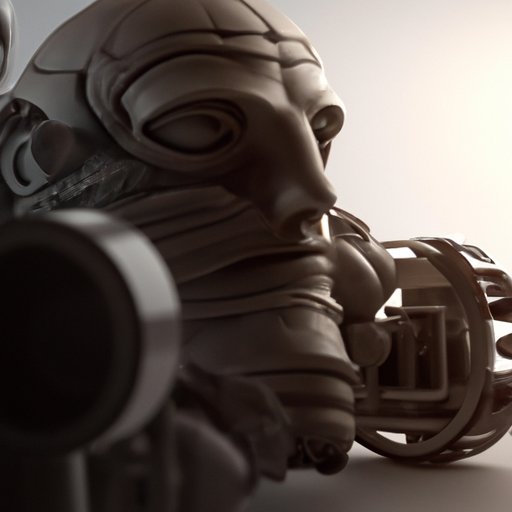Introduction
3D art is an exciting and growing field that combines creativity with technology. 3D artists use computer software to create three-dimensional models, animations, and visual effects. Becoming a 3D artist can be a rewarding career choice, as it offers a wide range of opportunities in film, video games, television, advertising, and more. In this article, we’ll explore the steps involved in becoming a 3D artist, from researching 3D art techniques and software to taking classes or online courses and networking with other 3D artists.

Research 3D Art Techniques and Software
The first step in becoming a 3D artist is to research different types of 3D art and the popular software used to create it. 3D art encompasses a variety of styles, such as modeling, animation, rigging, sculpting, and texturing. Each type of 3D art requires its own set of skills, so it’s important to understand which type you’re interested in pursuing. Additionally, there are many different software programs available for 3D art, including Autodesk Maya, 3ds Max, Blender, Cinema 4D, and ZBrush.

Take Classes or Online Courses in 3D Art
Once you’ve researched 3D art techniques and software, the next step is to take classes or online courses in 3D art. There are many options for learning 3D art, from traditional college courses to online tutorials and workshops. Taking classes or courses will give you the opportunity to learn from experienced 3D artists and gain hands-on experience with the software and techniques used in 3D art.
Create a Digital Portfolio of Your Work
As you learn 3D art, it’s important to create a digital portfolio of your work. A portfolio will help you showcase your skills and talents to potential employers and clients. When creating your portfolio, make sure to include a variety of pieces that demonstrate your knowledge and skill level. You should also include any awards or accolades you’ve received for your 3D art.

Learn Lighting and Texturing for 3D Art
Lighting and texturing are two important aspects of 3D art. Lighting helps to create depth and atmosphere in a scene, while texturing adds detail and realism. To become a successful 3D artist, you must learn how to effectively use lighting and texturing techniques. Some helpful tips for lighting and texturing include using a light meter to measure the intensity of light sources, paying attention to the direction and color of light, and experimenting with different textures.
Develop an Understanding of Anatomy, Proportion, and Perspective
In order to create realistic 3D models, you must have a good understanding of anatomy, proportion, and perspective. Anatomy refers to the structure of the human body and its various parts, while proportion is the relative size and scale of objects in a scene. Perspective is the way objects appear to an observer, based on their position and distance from the viewer. By studying anatomy, proportion, and perspective, you can ensure that your 3D models look realistic and accurate.
Join Professional Organizations or Communities
Joining professional organizations or communities is a great way to stay up to date on industry trends, meet other 3D artists, and get feedback on your work. Popular professional organizations for 3D artists include the International Game Developers Association (IGDA), the Academy of Motion Picture Arts and Sciences (AMPAS), and the Animation Guild. Additionally, there are many online communities and forums dedicated to 3D art, where you can discuss topics related to the field and share your work with other members.
Network with Other 3D Artists
Finally, it’s important to network with other 3D artists. Networking is a great way to find job opportunities, build relationships, and get advice from experienced professionals. You can start by attending industry events and conferences, joining online communities, and connecting with other 3D artists on social media. Additionally, you can reach out to 3D artists who have worked on projects that you admire and ask them for advice.
Conclusion
Becoming a 3D artist requires dedication and hard work, but it can be a rewarding and fulfilling career. By researching 3D art techniques and software, taking classes or online courses, creating a digital portfolio, learning lighting and texturing, developing an understanding of anatomy and perspective, joining professional organizations or communities, and networking with other 3D artists, you can successfully pursue a career in 3D art.
(Note: Is this article not meeting your expectations? Do you have knowledge or insights to share? Unlock new opportunities and expand your reach by joining our authors team. Click Registration to join us and share your expertise with our readers.)
